Deep in the Scottish Highlands, a process of regeneration is taking place
Words and images originally produced by Jacob Dykes for Geographical Magazine
The first thing you notice is the silence; the muting of everyday noise, everyday worries. Away from civilisation, the night sky glimmers. Staring up, you begin to hear the metallic chant of blood rushing across your eardrums, pumping through your arteries. Then, lost in reverie, the silence is broken by the sound of a buzzard’s wings, careering through the undergrowth on its way to its roost.
It’s night time in Alladale Wilderness Reserve, north of Inverness in the Scottish Highlands, and the crepuscular shades of the glens and mountains are now cloaked in darkness. When the light of morning returns, a palette of fawn, umber and ochre will again stroke the rolling hills in light.
Except something’s amiss. Hoodwinked by beauty, Highlanders have been sold short. It’s difficult to imagine, but this landscape was once coated in a rich, diverse blanket of trees. Stretching across 15,000 square kilometres, the forest was the UK’s last great wilderness expanse. ‘A few hundred years ago, the landscape would have been very different,’ says philanthropist Paul Lister, Alladale’s custodian. ‘It would have been a mosaic of lichen, lush pine, birch, alder, rowan, willow and oak. Th ere would have been a dense forest; in it would have been wolves, bears, wild boar, and lynx.’
Over the centuries, settlers removed the Great Caledonian Forest and its native wildlife to make space for sheep and cattle. Today, one per cent of the forest remains. Wildlife was incompatible with the shift to profitable agrarian lifestyles: wolves were hunted out of the woodland; capercaillies, wildcats, pine martens, red squirrels and wild boar should all be common across Scotland, but are not. The depletion of the forests has ignited a downward spiral of local extinctions. Species that support the health of the ecosystem are without sufficient habitat and the result is the denudation of flora and fauna alike.

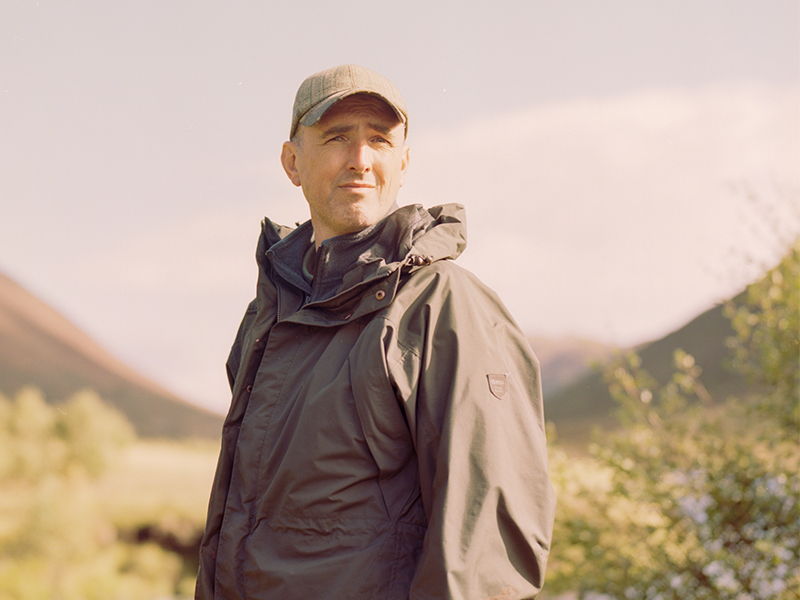
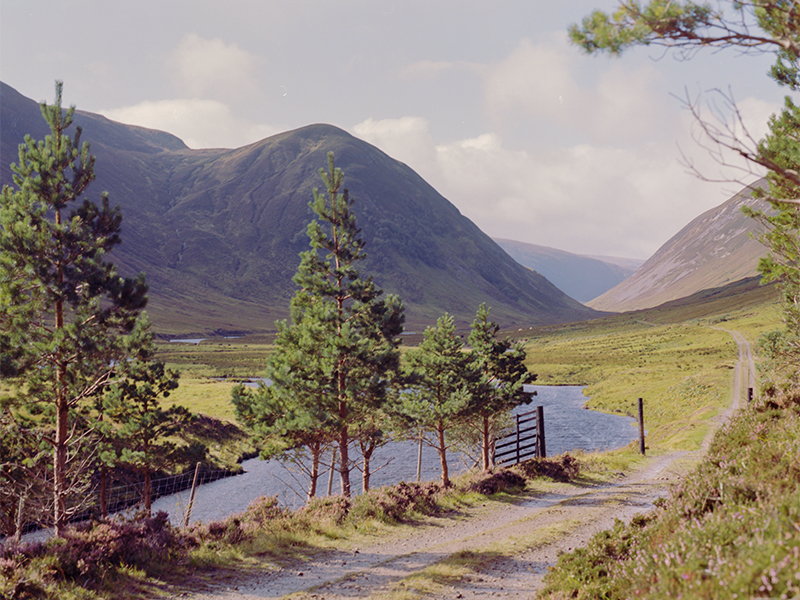
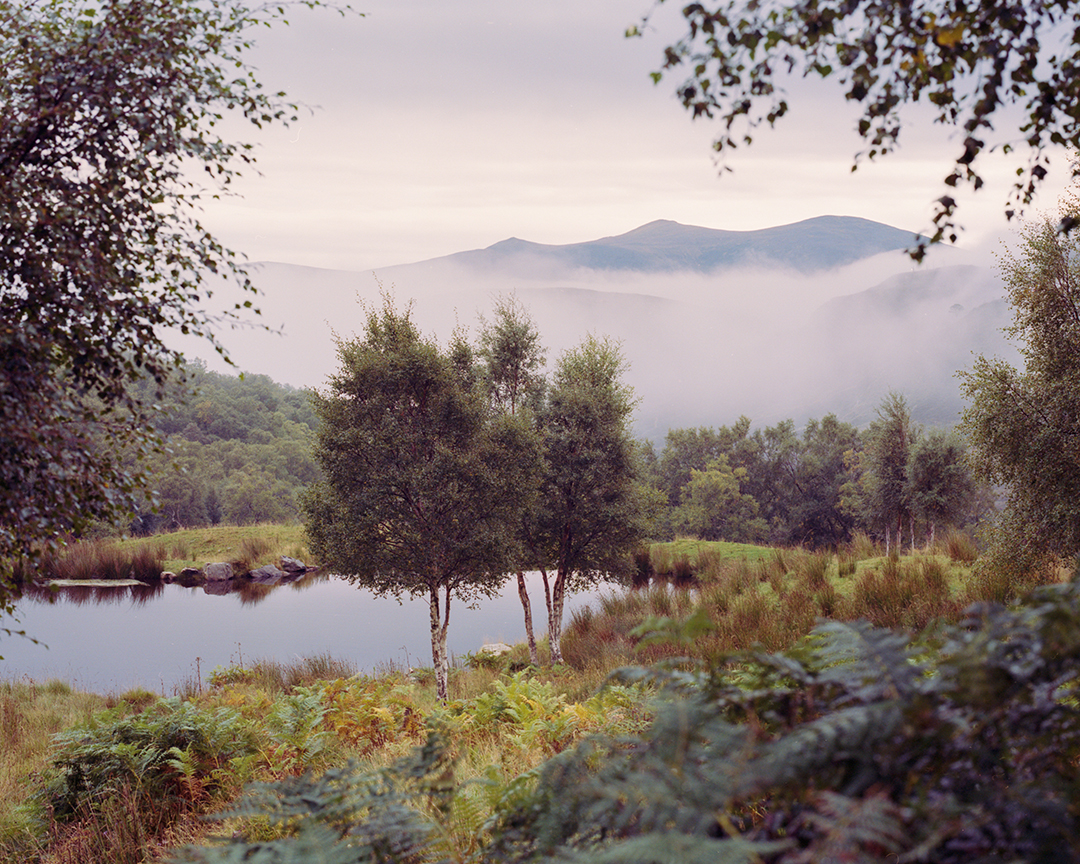
A PLANTED LEGACY
Few people are better positioned to understand the degradation of Scotland’s forests and wildlife than Innes MacNeil, reserve manager at Alladale. ‘The natural regulation of our woodlands has been lost.’
The loss of wolves has led to huge deer populations across the Highlands and that needs to be managed in some way,’ he explains. Between the 1960s and 2011, red deer numbers increased from 150,000 to 400,000. Combined, red and roe deer numbers reached 783,000 in 2013. Numbers of the introduced sika and fallow have reached 35,000.
Although morsels of the old-growth Caledonian forest remain, hopes of revival are quelled by these outsized deer numbers. ‘They hammer the regeneration by overbrowsing,’ says MacNeil as we drive through one of the rarer portions of old-growth forest, replete with 300-year-old trees. In one breath, you inhale the purified air of a healthy forest ecosystem; the exhalation, however, comes with mourning. ‘This is what the Great Caledonian Forest might have looked like before we messed it up,’ says MacNeil.
Dappled light cast through the old-growth canopy reveals mushrooms rising from mycelial networks infiltrating deadwood; a diversity of plants sit in the patches of light. Breaking now from the canopy cover, our vehicle halts at a panoramic view of the open glen below. Compared to the old-growth forest it’s stripped bare. ‘So many people, when they come to Scotland, see wonderful vistas, landscapes and rolling hills, and think that this is the pristine Highlands,’ says Lister. ‘But this ecosystem is manicured and damaged by human beings.’
In 2003, Lister purchased Alladale’s 23,000 acres with a fortune amassed through his family’s furniture business. Over the years, he has been gradually restoring the degraded ecosystem. In 2009, he launched a campaign with the Scottish Rural Development Programme to reforest vast tracts of the reserve’s two glens, Glen Mhoir and Glen Alladale. A million trees have now been planted.
To keep pace with Lister’s vision, the laborious work of Alladale’s small team of young rangers verges on the Sisyphean. ‘We were aiming for 1,000 trees a day during the peak planting period,’ says MacNeil. Spreading down the glens out of the old-growth forest, a mosaic of juvenile trees now coats more and more of the hills.
‘We’ve replanted the natives: mostly Scot’s pine, but also hazel, juniper, alder, rowan and birch. The fencing protects the saplings from the deer,’ says Neil Sutherland, Alladale’s youngest ranger. He explains that trees planted by the previous owner in the opening sections of Glen Mhoir now stand 15–25 feet tall. Farther down the glen, younger trees begin to appear, the tallest having grown around eight feet since Lister’s reforesting efforts began. ‘The seed stock was selected from locally reared trees to make sure that they were climatically and genetically suited to Alladale,’ says Sutherland.
The time it will take the replanted trees to reach the canopy of the old-growth forest will transcend the lifespans of their planters. ‘When I come out here and see the trees we’ve planted, I think, is that it? Eight feet, a decade’s worth of growth? We’re not doing this for ourselves, it’s for future generations,’ says MacNeil.
For Sutherland, reforesting efforts began when he was just eight years old. He grew up in the neighbouring village of Ardgay and stalked his first deer at six under the guidance of MacNeil, who would go on to become his boss. Now, the trees themselves – grown in native earth – mirror the chain of stewardship enshrined in Alladale’s young team of home-grown rangers. ‘These young lads have helped to create a seed bank here that will be handed over to the next generation’, says MacNeil. ‘We just want to leave the land in a better condition than we found it.’
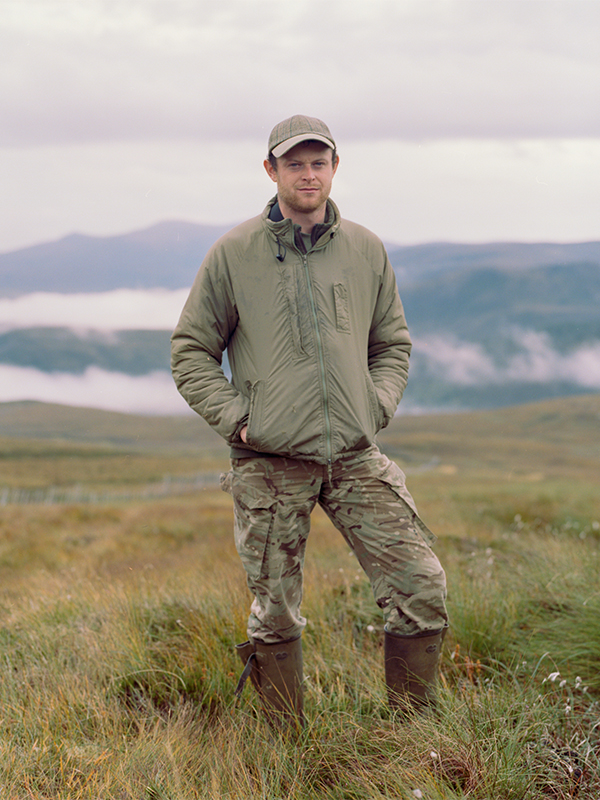

ENCOUNTERING THE HUMAN HAND
Scotland’s forests were once the lifeblood of British biodiversity: 149 insect species are associated with hawthorn; 229 with birch; 37 bird species make use of rowan berries; 23 of Scot’s pine. While the habitat regenerates, Alladale is working with ecologists to revive populations of relict species: the reserve has joined a breeding program with the Royal Zoological Society of Scotland to bolster populations of Scottish wildcat, declared ‘functionally extinct’ in the wild in 2018 by the IUCN; nests are being built to attract an expanding population of white-tailed sea eagles and golden eagles, their numbers in the Highlands having been reduced by grouse moors; red squirrel numbers are rebounding in the area following a translocation programme with the Roy Dennis Wildlife Foundation. ‘Paul’s mostly interested in the value of the habitat itself and restoring its potential, rather than the traditional value of land for hunting and fishing,’ says MacNeil.
To attract wealthy hunters, many estates in Scotland keep dense deer populations, some as high as 30 deer per square kilometre. In 2017, authorities culled 135,000 individuals, but deer populations are still rising across Scotland.
The government hands out grants for landowners to keep deer numbers down and since 2016, Scottish National Heritage (now NatureScot) has had the authority to fine landowners up to £40,000 for failing to meet culling targets. There’s no fear of that at Alladale, which has reduced its numbers from around 2,000 in 2003 to 600 today. ‘Compared to the neighbouring estates, we’ve got lower population targets to reach if we want the forest to regenerate,’ says MacNeil. ‘Once the trees start to reproduce, this much intervention won’t be needed.’
Although the goal is to achieve self-regulating wilderness, human intervention is a part of Alladale’s transformation. Some 35 kilometres of fencing has been constructed around the saplings to protect them from deer. When the trees reach reproductive age in around a decade, it’s hoped that wind dispersal and seed carriage by birds will regenerate the forest outside the protected areas so the fencing can come down.
Two years ago, Alladale ceased commercial deer stalking; the numbers needed to attract visitors would be incompatible with the forest regeneration. Instead, it conducts its own culls. ‘Now we’re taking out about 300 a year,’ says MacNeil.
The cull is no ordinary task – days start as early as 4.30am. Guided by night-vision goggles, they can run deep into the night. We start out in the early morning. As we climb into the mountains, dark clouds begin to menace overhead and rain soon obscures the view. We’ve become figures wrapped in a foggy embrace. To spot a deer here, you need years of practice. ‘We have a pretty good idea of where they tend to be at different times of the day,’ says Sutherland. ‘You can see how quickly conditions change, though.’
He halts to take the vantage point. A glance through the binoculars confirms three sika stags 300 metres up the mountain. The air, buffeted by the driving wind, is tense; the ground underfoot is a sodden bog. To keep out of sight, we’re on all fours, clambering over thickets, ducking in and out of hollows. The crabbing lasts some 150 metres until we’re within range. Somehow, however, we’ve managed to spook the deer and they disappear into the hills. ‘We’d keep going, but you look like you’ve just realised there’s only so much that waterproof trousers keep out,’ says Sutherland.
Descending into the glen, we drive back through the reforested area. According to Sutherland, the dynamics between the rejuvenating forest and the deer numbers hang in delicate balance. ‘If the deer drop below 500, it could create a vacuum, where deer are pulled in from the neighbouring reserves,’ he explains.
A wayward sika stag, having broken through the fence, halts us in the road. Sutherland reaches for his rifle – it’s ‘shoot to kill’ in the reforested area. The explosive force of the bullet pierces the tension.
Some say that such intervention runs contrary to visions of ‘natural’ landscapes. Robyn Boeré, professional agrologist, responded to the Economist’s November 2020 article on rewilding initiatives in Scotland by saying: ‘Rewilding is selective about what is part of “real nature” and should thus be saved or recreated, and what is unnatural and can be disposed of. This project requires the killing of thousands of animals, namely deer … they remain a waste product in the pursuit of a “natural” Utopia.’
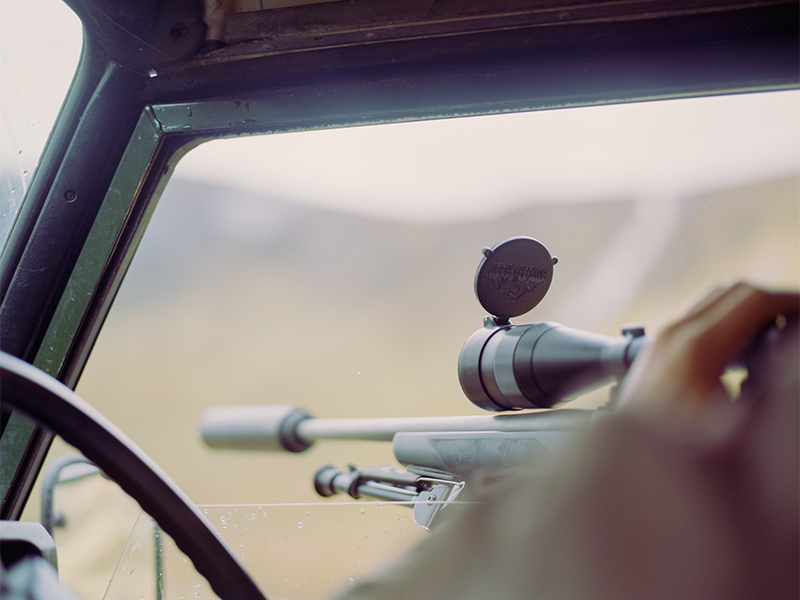

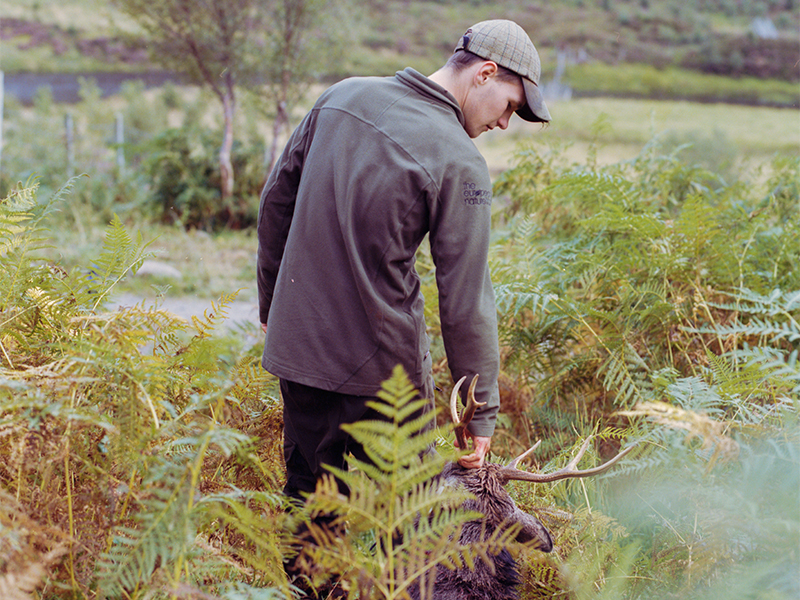
Those at Alladale, however, openly acknowledge that their intervention is unnatural – just as unnatural, perhaps, as the land management that saw deer numbers balloon to their present levels. Here, they find common ground: ‘Let us call rewilding what it is: another attempt to manage our natural environment for specifically human goals,’ said Boeré. The human goal at Alladale, Lister tells me, is to improve and restore a habitat that we have degraded.
There is, however, an alternative. Paul Lister has become known as the ‘wolf man of Scotland’, painted by some corners of the media as a somewhat crazed individual intent on releasing wolves onto his land for the sentiment alone. The ambition, however, is more considered. ‘The last wolf in Scotland was killed in 1730,’ says Lister, as we venture further into the mountains. ‘Since then, we’ve lost the predatory control of deer populations. Releasing wolves into a controlled area of 50,000 acres at Alladale would be a natural alternative to deer culls, but it would also influence deer behaviour. They would be pushed to these higher altitudes, allowing low-lying forests to regenerate naturally.’
Ecologists suggest that the health of the deer would also benefit, producing larger stags due to lower population densities, with richer habitat in the naturally regenerated forest. The proposition, despite Lister’s assurance of a 50-mile fence around his reserve, has received staunch opposition. Speaking in The Big Vision, a documentary filmed at Alladale in 2015, one local livestock owner said: ‘I would be worried about my animals. They would be an easy target for wolves. People also fought for many years to win the freedom to roam among the Scottish Highlands.’
Angus Macfadyen, an Oban hill farmer who chairs the National Farmers Union Scotland’s Environment and Land Use Committee says: ‘Farmers and crofters are hugely concerned at constant speculation regarding the potential release of top-line predators such as wolves or lynx in Scotland. These predators will kill lambs and sheep and, unfortunately, the experience of our members today who are already losing lambs and sheep due to predation by white-tailed eagles shows us how difficult these issues can be to deal with.’
But Lister thinks that fears of livestock predation have been inflated in relation to his own fenced-in proposal. ‘We’re talking about two packs of wolves in a 50,000-acre expanse, protected by an electric fence.’
It’s also hoped that wolves would draw tourists to the area, diversifying local employment and bringing new opportunities for struggling farmers. Since they were reintroduced to Yellowstone National Park in 1995, US$40 million has been added to the local economy per annum. To Lister, the intransigence speaks of the disconnect between Scotland and its natural heritage: ‘The big question is, are we prepared to start the process of change?’ he asks. ‘Are we prepared to see portions of Scotland become living landscapes again?’
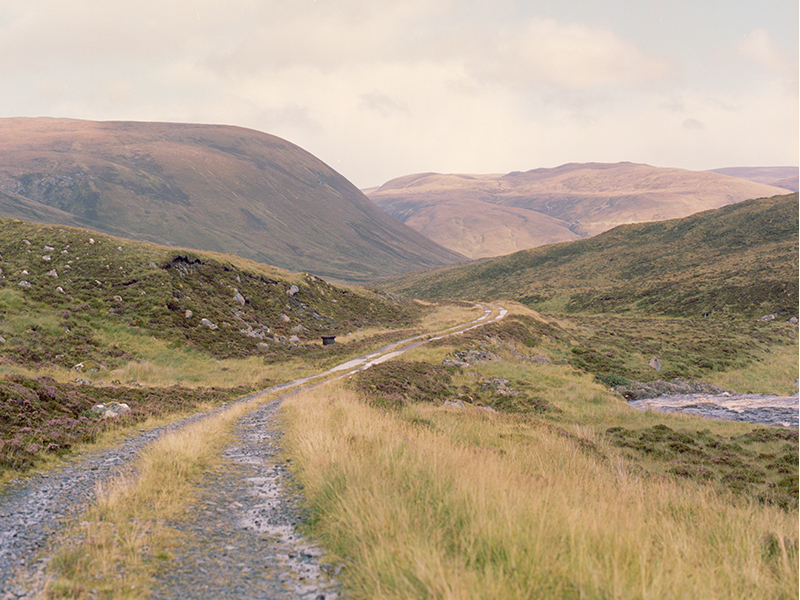
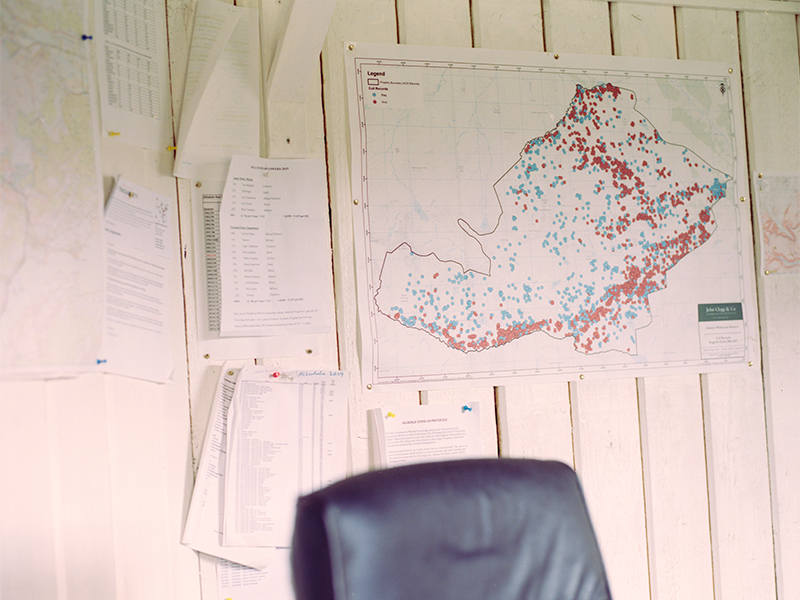
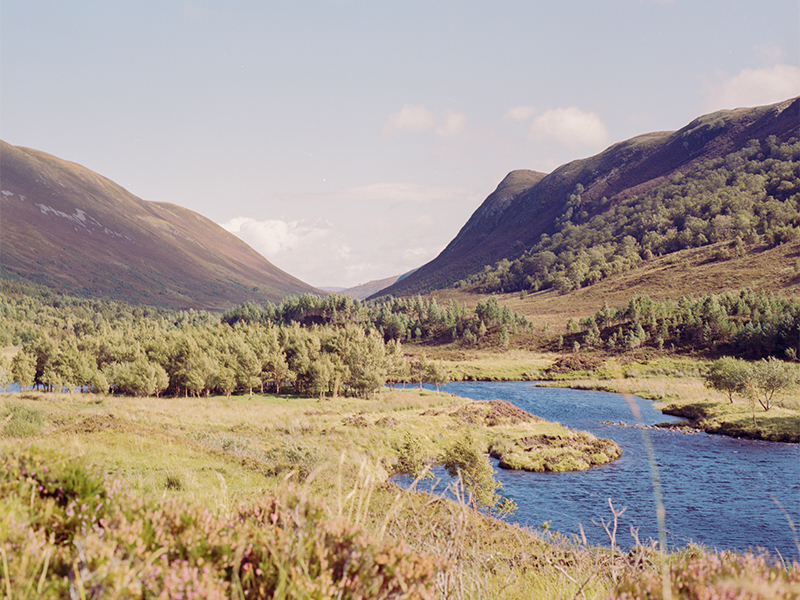
A LAND ALIVE
During the 18th, 19th and 20th centuries, ploughs were used to drain thousands of square miles of peatland in Scotland. Peat has an impressive ability to sequester carbon in dense layers of ancient organic matter, so farmers unwittingly damaged an important natural carbon sink. Scientists estimate that more than eight million tonnes of CO2 were released into the atmosphere through peatland drainage in Scotland alone.
In 2012, Alladale launched a peatland-restoration project, building 4,000 small dams that now protect around 230 hectares of peatland. Bouncing up the project area on the back of a quadbike, a patchwork of mossy pools enters into view. ‘Insects benefit from the restored peatland, in turn helping the birdlife to recover,’ says Ryan Munro, another of the reserve’s home-grown rangers. ‘Each aspect forms a part of the puzzle. The peatland restoration is as important as the forest regeneration, which is as important as wolf reintroductions.’ All of these ecosystem functions can be built through a shift towards ‘natural capital’, thinks Lister. The financial market analyst ICAP partially funded Alladale’s peatland restoration, which will sequester 49,100 tonnes of CO2 – more than the equivalent of the company’s carbon emissions.
Down into the glen, the insect assault subsides. A lone raven shrieks as it passes overhead. ‘I wish we could show you a reserve buzzing with life, but this land is in recovery,’ says MacNeil. Across the UK, 40 million birds have disappeared in the past 50 years. From 1970 to 2015, the UK’s butterflies decreased in abundance by 68 per cent; the distribution of mammals dropped by 26 per cent; bryophytes (an informal group of liverworts, hornworts and mosses) and lichens by 17 per cent.
Amid this deluge of doleful stats, it seems reasonable to ask what areas we will set aside for nature. Worldwide, the IUCN ranks protected areas from one to six: one being wilderness and six being harvested areas. The UK’s 15 national parks all score a five. Scotland’s deer estates cover 18,000 kilometres, 22.8 per cent of the country – twice the size of Yellowstone – yet they contribute a mere £105 million per year to Scotland’s economy, which amounts to just 0.04 per cent of the country’s GDP.
By contrast, a 2010 study commissioned by Scottish Natural Heritage estimated that annual visitor spending attributable to nature-based tourism amounts to £1.4 billion, supporting 39,000 jobs in Scotland. Lister, looking to the mountains beyond, says that private landowners should take stock of the economics and use more of their land to restore Britain’s natural heritage. ‘The biodiversity of Knepp Estate in West Sussex has come alive through rewilding. Their safari packages are rampantly popular, and the local economy has benefi ted in turn,’ he says. ‘The Highlands should take some inspiration. The modern approach of rewilding isn’t incompatible with tradition – more land can simply be set aside for nature. Pockets like these can be the vanguard of a new mode of environmental thinking.’
We arrive at the vantage point for viewing Alladale’s nesting golden eagles. ‘Most important to me is that guests leave with a sense of what nature could be like in Scotland,’ says MacNeil. Emerging from the Land Rover, he sets up a telescope to view the nesting pair. As the sun sets behind rolling hills, the calendar ticks off another day. ‘There’s no quick fix for the Scottish ecosystem,’ says MacNeil. One day, the succession of species and vegetation could be unhurried by human hands. Those restoring these lands imagine a wilder place, patiently revitalised today as a gift to generations to come. This is a wilderness in pupation, deep in the Scottish Highlands.